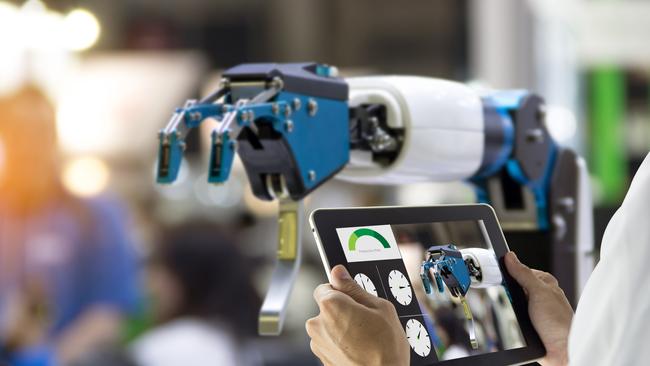Robotics essential to comparative advantage, living standards
Embracing and advancing fully autonomous robotics is necessary to ensure Australia maintains its high standard of living.

Embracing and advancing fully autonomous robotics is necessary to ensure Australia maintains its high standard of living and maximises its competitive advantage.
This idea really isn’t as far-fetched as you might think. Fortunately, we have the vision and capacity to design and build robots to suit Australian and global needs, while setting the essential legal and ethical rules to engender trust in the technology at home and abroad.
We need to get in the game now to make this happen.
On June 18, Australia took a vital step forward on this path with the launch of the Robotics Roadmap at Parliament House, announced by Chief Scientist Alan Finkel.
An initiative of the Australian Centre for Robotic Vision, the road map provides a framework for ensuring robots are used as a tool to unlock human potential, modernise the economy and build national health, wellbeing and sustainability.
We need this road map to guide us forward. Take a minute to reflect on where Australia would be if we had failed to embrace the revolution in information and communications technology and ignored the need to incorporate computing into our daily lives. Imagine if the banking industry had decided not to invest in the rollout of ATMs and online payments.
Failing to recognise the importance of developing a competitive, thriving robotics industry would be equally damaging.
The need to innovate will not go away. We have already seen automated technology taking on dull, dirty and dangerous tasks, particularly in industries such as mining, agriculture and warehousing, shifting work opportunities in those industries to more interesting and challenging roles.
We are now also more likely to see robots partially sharing tasks with humans. Increasingly, robots will do the heavy lifting and the repetitive tasks, while humans will perform duties that require more dexterity, complicated decision-making and creativity.

Our world-leading mining sector offers the best example of what is possible for Australian industry to achieve when we fully embrace robotics. Rio Tinto has invested in robotics technology such as autonomous haul trucks and drill systems, and has recently received approval to run a fleet of fully automated trains. In a large, resource-rich country, we must harness roboticised automation to be more efficient and competitive on a global scale.
Eventually, robots will become embedded in our daily lives — cleaning our houses and driving our cars — and be more likely to collaborate with us. They will also have more opportunities to make decisions that will have significant consequences for people.
Australian researchers, engineers, scientists, ethicists and policymakers must work together to ensure the “rules of engagement” between robots and people align with our legal frameworks and are embedded into the underlying safety standards for autonomous systems.
Australia offers a unique setting as a testbed of robotics technology. We have spacious and diverse terrain, on land and sea, in which new designs can be tested and prototyped in ways simply not possible in other regions.
Our highly trusted international reputation also makes Australia ideally placed to influence the ethical, legal and standards frameworks for robotics technology. We have a strong brand in the quality of our research and development, and in the robustness of our product designs.
When developing robots in a civilian or military capacity, our stable political and legal systems, plus the strength of our accredited academic training, foster a high standard of ethical oversight. These existing strengths play to our advantage.
Given the steady losses across the Australian manufacturing sector over time, particularly in the auto manufacturing industry, the shift into robotics may be met with reluctance and suspicion.
On the flip side, we should note that manufacturing heavyweights such as Germany, South Korea, China and the US continue to press forward due to their greater acceptance and incorporation of robotic automation.
In Australia, the next generation holds the key. For example, Marissa Thomas, a Monash University student and founder of education start-up The STEAM Engine Co, is taking the lead in helping children learn about robotics in the classroom. She manages a team of engineering students who run workshops for primary and secondary students in schools, teaching young people the basics of robotics and computational thinking as they work through the steps of assembling a robot called Violet.
Investment in this type of robotics education in our schools and universities is essential to advancing the educational and cultural shift that needs to take place.
It’s time to own robotics on Australian terms. If Australia doesn’t invest in the wide scope of opportunity that robotics offers, other countries will set the standards and impose their ethical frameworks. The solutions we will need for our security, our biodiversity, and our economic prosperity will rely on building a thriving robotics industry, and the Robotics Roadmap sets the path for us to do it our way.
Elizabeth Croft is dean of the faculty of engineering at Monash University.


